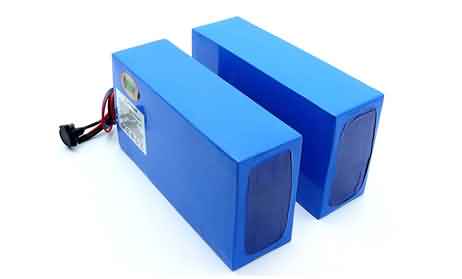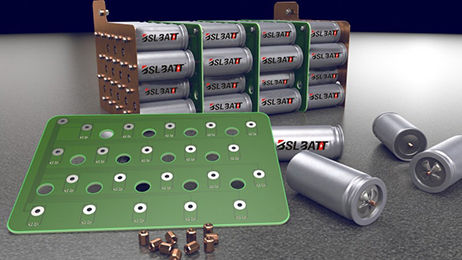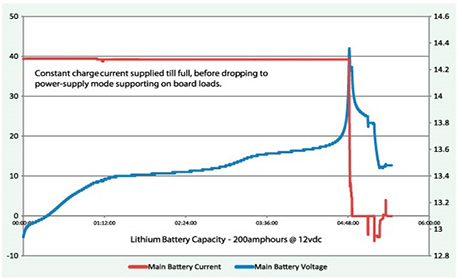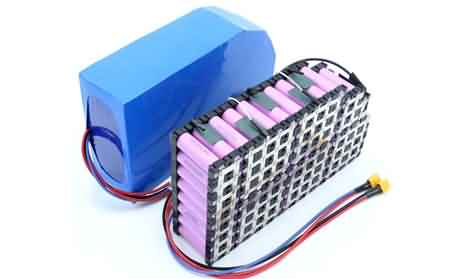
- China
- English
- Françai
- Español
- Deutsch
- Română
- العربية
- 한국어
- 日本語
- Italiano
- Português
- Gaeilge
- Dansk
- Čeština
- Русский
- Afrikaans
- Euskara
- Català
- Esperanto
- हिन्दी
- Ελληνικά
- Bahasa Melayu
- Polski
- Српски
- Kiswahili
- ภาษาไทย
- Tiếng Việt
- Türkçe
- Svenska
- Cymraeg
- Slovenčina
- Latviešu
- Malti
- Magyar
- Galego
- ગુજરાતી
- Eesti Keel
- বাংলা
- Shqip
- беларуская мова
- Nederlands
- Tagalog
- ქართული
- Íslenska
- Kreyòl Ayisyen
- Lietuvių
- Norsk
- slovenščina
- தமிழ்
- Українська
- ײִדיש
- اردو
- తెలుగు
- فارسی
- македонски
- ಕನ್ನಡ
- Bahasa Indonesia
- עברית
- Suomi
- Hrvatski
- Български
- Azerbaijani

Industry Application
Product Type
What materials are in a lithium ion battery?
Published by BSLBATTFeb 22,2019
What materials are in a lithium ion battery?
Lithium ion battery materials are essential components in the production of lithium-ion batteries, which are widely used in various electronic devices, electric vehicles, and renewable energy systems. These batteries consist of several key materials that work together to store and release electrical energy efficiently. Cathode Materials State-of-the-art cathode materials include lithium-metal oxides [such as LiCoO2, LiMn2O4, and Li(NixMnyCoz)O2], vanadium oxides, olivines (such as LiFePO4), and rechargeable lithium oxides.11,12 Layered oxides containing cobalt and nickel are the most studied materials for lithium-ion batteries. They show a high stability in the high-voltage range but cobalt has limited availability in nature and is toxic, which is a tremendous drawback for mass manufacturing. Manganese offers a low-cost substitution with a high thermal threshold and excellent rate capabilities but limited cycling behavior. Therefore, mixtures of cobalt, nickel, and manganese are...
Published by BSLBATTFeb 20,2019
Lithium Ion Batteries and Their Manufacturing Challenges
Lithium Ion Batteries and Their Manufacturing Challenges Lithium ion batteries are manufactured in sets of electrodes and then assembled in cells. Active material is mixed with polymer binders, conductive additives, and solvents to form a slurry that is then coated on a current collector foil and dried to remove the solvent and create a porous electrode coating. There is no single lithium ion battery. With the variety of materials and electrochemical couples available, it is possible to design battery cells specific to their applications in terms of voltage, state of charge use, lifetime needs, and safety. Selection of specific electrochemical couples also facilitates the design of power and energy ratios and available energy. Integration in a large format cell requires optimized roll-to-roll electrode manufacturing and use of active materials. Electrodes are coated on a metal current collector foil in a composite structure of active material, binders, and conductive additives, r...
Published by BSLBATTFeb 15,2019
【 Insane】Lithium battery life cycle is how many times
With the promotion of social energy conservation and environmental protection, more and more environmentally friendly products have been applied to the market. In the battery industry, the ternary lithium battery quickly occupied the market with numerous advantages and gradually replaced the traditional lead-acid battery. For the traditional battery, the ternary lithium battery has the advantages of long life, energy saving, no pollution, low maintenance cost, complete charge and discharge, light weight, etc. It is said that the life of the ternary lithium battery is long and to what extent? Ternary lithium battery What is a ternary lithium battery? In nature, lithium is a light metal with a small atomic mass*, which has an atomic weight of 6.94 g/mol and ρ = 0.53 g/cm3. Lithium is chemically active, and it is easy to lose electrons to be oxidized to Li+. Therefore, the standard electrode potential is *negative, -3.045V, and the electrochemical equivalent * is small, 0.26g/Ah. T...
Published by BSLBATTFeb 13,2019
【You May Want To Know】Lithium battery price factor
Lithium battery price composition The price of lithium battery is mainly composed of three major components: battery core, protection board and outer casing. At the same time, due to the power consumption and current of the electric appliance, the material of the connecting piece between the batteries (conventional nickel sheet, formed nickel piece) The selection of copper-nickel composite sheets, jumpers, etc. will affect the cost. Different connectors (such as aviation plugs, from a dozen yuan to thousands of dollars) may also have a greater impact on costs, and there is Different PACK processes can also affect costs. Factors affecting the price of lithium batteries First, the selection of the battery core: First, the selection of batteries for different material systems will affect the price of the entire lithium battery. Lithium batteries according to different cathode materials, there will be lithium manganate (3.6V), lithium cobalt oxide (3.7V / 3.8V), lithium nickel cobal...
Published by BSLBATTJan 16,2019
【2019 The Latest Guide】Can I Charge My Lithium Battery With a lead acid charger?
Can I charge my lithium battery with a lead acid charger? This is a question we get asked every day by the general public. Lithium batteries are not like lead acid and not all battery chargers are the same. A 12v lithium LiFePO4 battery fully charged to 100% will hold voltage around 13.3-13.4v. Its lead acid cousin will be approx 12.6-12.7v. A lithium battery at 20% capacity will hold voltage around 13V, its lead acid cousin will be approx 11.8v at the same capacity. As you can see, we are playing with a very narrow window of voltage with lithium, less than 0.5V over 80% capacity. A Lithium LiFePO4 charger is a voltage-limiting device that has similarities to the lead acid system. The differences with Li-ion lie in a higher voltage per cell, tighter voltage tolerances and the absence of trickle or float charge at full charge. While lead acid offers some flexibility in terms of voltage cut off, manufacturers of LiFePO4 cells are very strict on the correct setting because Li-ion c...
Published by BSLBATTJan 07,2019
【Experts Confirmed】BSLBATT Lithium Battery Charging Method Has Increased My Battery Life By Ten Times
【Experts Confirmed】BSLBATT Lithium Battery Charging Method Has Increased My Battery Life By Ten Times Lithium iron phosphate is a type of lithium-ion battery, since the energy is stored in the same way, moving and storing lithium ions instead of lithium metal. These cells and batteries not only have high capacity, but can deliver high power. High-power lithium iron phosphate batteries are now a reality. They can be used as storage cells or power sources. In addition, Lithium Iron Phosphate batteries are among the longest lived batteries ever developed. Test data in the laboratory show up to 2000 charge/discharge cycles. This is due to the extremely robust crystal structure of the iron phosphate, which does not break down under repeated packing and unpacking of the lithium ions during charging and discharging Lithium Iron Phosphate Parameters Nominal voltage 3.2 Volts Peak voltage 3.65 Volts Note our new data on capacity versus charge voltage Absolute Minimum discha...
Published by BSLBATTDec 07,2018
Over-Charge & Over-Discharge Protection of Lithium Batteries
“Is your battery protected when battery is over-charged or over-discharged?” Our customers usually asked this. Let’s check the details of the over-charge and over-discharge protection of lithium batteries. Over Charge Conditions Various battery chemistry require specific charging profiles to optimize performance and prevent safety issues during charge. Generally, almost all Li-ion battery chargers use a constant current/constant voltage charging algorithm. Once the charger enters constant voltage mode it is important to ensure the charge does not exceed the maximum level allowed to avoid exposing battery is overcharging conditions as it can cause excessive internal temperature rise and lead to premature failure. Over Discharge Conditions Typical rechargeable lithium ion battery cells can safely operate down to 2.75V/cell. However, when an unprotected lithium cell is discharged past the minimum voltage level you run the risk of damaging the cell and ultimately l...
Published by BSLBATTNov 12,2018
Development requirements for UPS lithium batteries in energy storage data centers
1.Current status and pain points of UPS power supply development in energy storage data centers When the utility power is abnormal (interruption of power supply), the battery discharges the power supply through the UPS supply load. This traditional data center power standby mode has the following application pain points: (1) High electricity bills. Therefore, how to reduce data center electricity bills is crucial to improve the profitability of data center enterprises. (2) The battery does not discharge during the service period, resulting in waste of resources, which is a sunk cost. Since the data center usually adopts dual-channel power supply guarantee + 2N mutual standby structure, the battery rarely discharges, and is in a long-term idle state, causing a large Waste of resources. (3) The battery is in a floating state for a long time, and the state of health is unknown. As mentioned above, due to the high reliability of the data center power supply, the battery has been in a...
Published by BSLBATTNov 09,2018
Lithium-ion batteries can meet today’s and future data center needs
Adopt intelligent monitoring to prevent failure ★ When predicting the life of a lead-acid battery, it is difficult to know when it will fail, and perhaps the lead-acid battery may be completely out of function overnight. Therefore, it is difficult to determine whether the backup power is always available. Data center operators either have to accept this risk or invest in deploying redundant battery packs. ★ However, lithium-ion battery systems can be equipped with intelligent monitoring systems so workers can check their state of charge (SOC) and health status (SOH) at any time. So you can make an informed judgment when you need to replace the battery, and don’t waste too much time replacing the battery. It also protects against the loss of critical backup power by eliminating failures. ★ Applications that require higher operating temperatures are best suited for lithium-ion batteries because they can withstand higher temperatures than lead-acid batteries. As a result, data...
Published by BSLBATTNov 03,2018
What is causing the lithium battery to catch fire?
To be precise, the so-called “explosion” is actually a fire, and the lithium battery ignites spontaneously. So, what is causing the lithium battery to catch fire? Charging speed too fast ★ The main component of a lithium ion battery is a battery in which a lithium alloy metal oxide is used as a positive electrode material, graphite is used as a negative electrode material, and a nonaqueous electrolyte solution is used to realize a chemical reaction and supply electric power. When charging, lithium ions are located on the positive electrode and move to the negative electrode during discharge. The principle is simple. ★ The problem is that the movement speed of lithium ions is limited, and once it is exceeded, it becomes unstable, such as a short circuit. Although companies such as Qualcomm are actively promoting fast charging technology, the charging speed needs to meet the limits of lithium ions and create a stable environment through some technologies to prevent s...
Published by BSLBATTNov 01,2018
Comprehensive understanding of self-discharge of lithium battery
Classification of self-discharge: From the effect of self-discharge on the battery, self-discharge can be divided into two types: self-discharge where the loss capacity can be reversibly compensated; and self-discharge where the loss capacity cannot be reversibly compensated. According to these two classifications, we can give some self-discharge reasons approximately contoured. Reasons for self-discharge: 1. Causes of reversible capacity loss: The reason for the reversible capacity loss is that a reversible discharge reaction occurs, and the principle is consistent with the normal discharge reaction of the battery. The difference is that the normal discharge electron path is an external circuit and the reaction speed is fast; the self-discharge electron path is an electrolyte, and the reaction speed is very slow. 2. Causes of irreversible capacity loss: When an irreversible reaction occurs inside the battery, the resulting capacity loss is irreversible capacity loss. The typ...
Published by BSLBATTOct 30,2018
Lithium battery fire extinguishing and lithium ion batteries fire safety precautions
There is currently limited data on fire characteristics for large batteries. However, we can predict that when the battery enters thermal runaway, thermal runaway propagation will produce an identifiable mark; the battery will also exhibit corresponding characteristics in some way. The fire may be in a state of gradual burnout or an explosion. Both types of accidents, as well as the negative by-products they produce (jetted shrapnel, molten metal, burning electrolytes, and other materials) can be managed and controlled by setting appropriate storage measures and transportation environments for the battery. Systems using lithium ion batteries may need to continue to use and develop some suppression and lithium battery fire suppression systems to reduce the incidence of negative accidents and thus control the risk in order for the battery system to be reassured by users. Lithium ion batteries fires occur all over the world. These fires occur in energy storage systems (wind, solar...




























